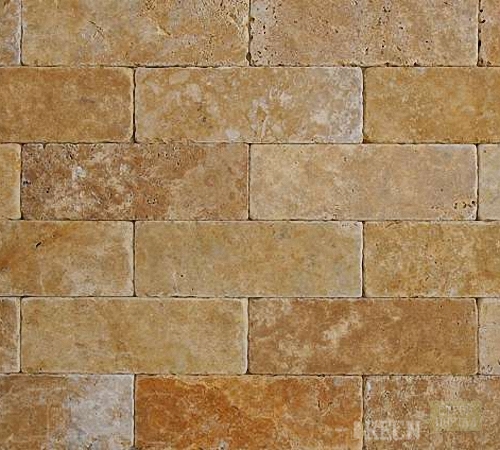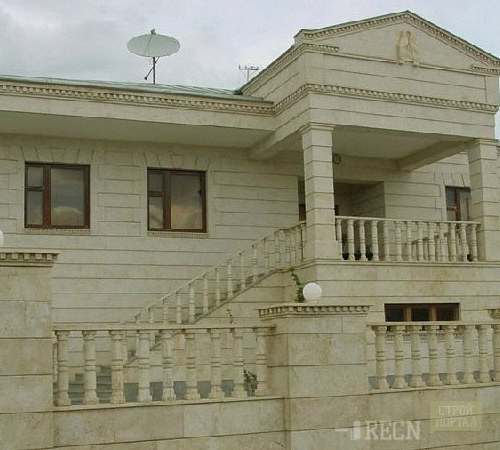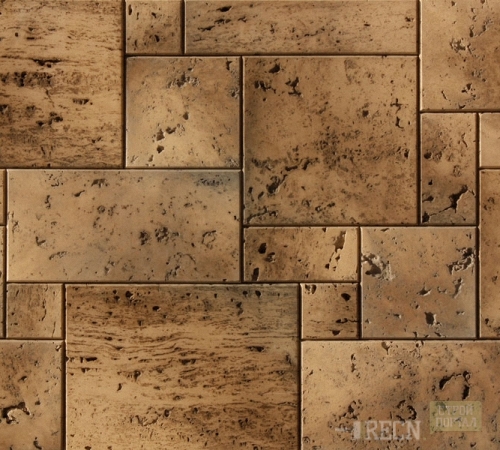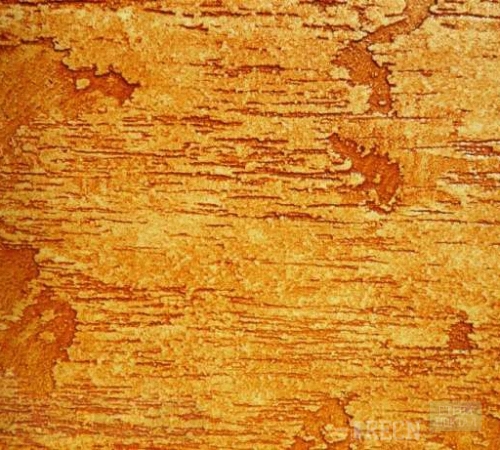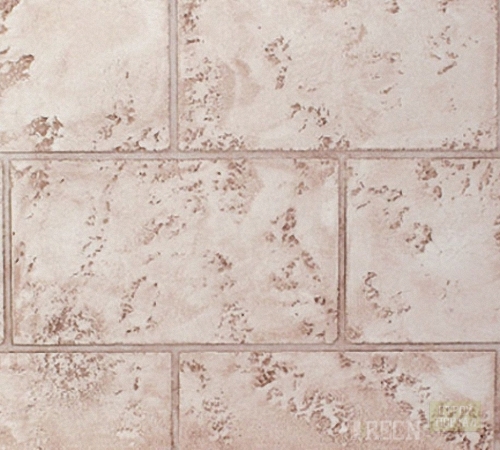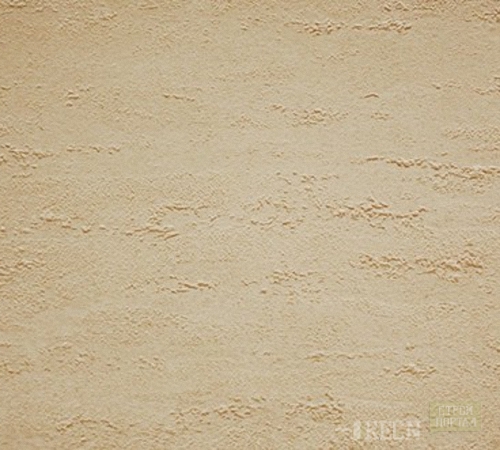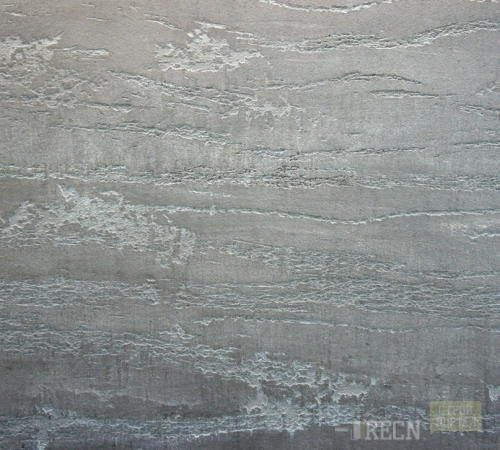
Travertine. Features and characteristics of the material Useful advice
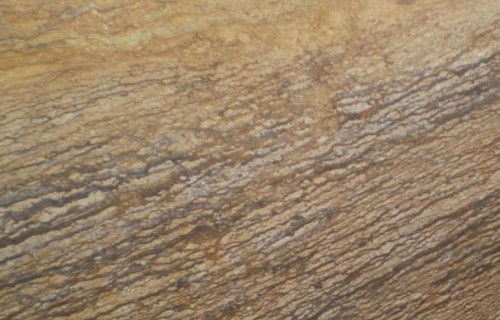
Today, the decoration of houses of houses is becoming increasingly popular. Artificial analogues though look at the level with natural material, but significantly inferior to him in reliability. One of the optimal solutions of this issue is travertine, the price of which is not relatively high. The stone looks quite effectively and serves not one hundred years. In addition, the modern market of building materials offers a rather rich palette of a variety of execution options, which allows you to choose absolutely any designer solution.
Content
What is travertine?
The material was known in ancient times and used before the appearance of buried clay brick. The primaries of its useful properties were the ancient Romans. The stone refers to the family of tuffs and other limestone rocks resembles other limestone. It is easily processed due to the porous structure and low density. The same circumstance explains his small weight.
Travertine is formed in mountain caves and grottoes. By chemical composition refers to calcium carbonate, in other words, it is formed during the decay of carbon dioxide. Education time is 20-30 thousand years BC, in places where volcanoes once actively acted. This circumstance is explained by the fact that in places of deposits of travertine reserves are practically not exchemable, which in turn affects the pricing. In Russia, travertine is mined in the Transcaucasia, as well as in the Pyatigorsk area.
One of the most striking examples of using travertine confirming the durability of this material is the Roman Colosseum whose history has more than two thousand years. More modern buildings - Vyborg Metro Station in St. Petersburg, as well as the Mosque "Chechnya Heart" in Grozny. More clearly demonstrates what the real travertine photo looks like in the article.
The use of travertine
Today there are more affordable and simple materials for capital construction. Therefore, travertine is used, as a rule, in decorative purposes. It happens different colors:
- light gray
- white
- cream
Such colors are suitable for decorating the facades in an English style, which involves pastel tones. Externally, the stone looks not too aesthetic, therefore it makes facing tiles from it. It is a wide variety of forms and sizes. In addition, the manufacturing process involves crushing material and further pressing with the addition of adhesive and protective impurities. This allows you to give tiles not only natural colors, but also more exotic. In some fields, there is a natural travertine, which, as a result of certain chemical processes, has acquired a golden color or color similar to a red tree.
Another equally interesting option is the travertine-plaster, which is sometimes called "travertine" (on the Italian manner). It allows you to make a very realistic imitation of the real stone. Applied not only for internal. But for outdoor work. The greatest advantage is that it is perfectly painted without loss of texture. What allows the use of plaster absolutely in any designer projects.
Buy travertine in untreated form is possible only in a career. However, if it is not about decorating, but about the capital construction of a large enough house in several floors, this idea is worth thinking about. If delivery is not too expensive, natural stone will cost much cheaper bricks. The travertine house will be sufficiently light, which will save on the foundation, moreover, the material has elevated thermal conductivity properties. With good outdoor insulation, it reduces heating costs twice.
Interestingly: granite, travertine, marble and other natural stones differ exclusively in density and texture, on their wear resistance does not affect their characteristics. In addition, it is better to use lighter materials to decorating the interior, as they do not create an additional load on the walls and the foundation, which means the house will slightly longer. Especially relevant for regions with underground waters and chernozem, where the soil shrinkage is 5-10 mm per year (in ten years the first cracks will appear, provided that construction standards were observed).
Tile Travertine in the interior
Travertine The stone is sufficiently supportive - this causes ways to produce tiles:
- grinding
- pressing.
The product is obtained different, both in its technical parameters and by texture. Grinding implies the processing of a solid rock at which the texture is fully maintained. From the front side, such a tile is treated with special protective agents that protect against corrosion. But, such a cover is not capable of preventing mechanical damage. The material density is only a little superior to the tree. Consequently, any damage causes the appearance of jerseals, dents and scratches. This circumstance determines the use of tiles for finishing facades of houses or inner surface surfaces. The material is environmentally friendly and safe for a person, in contrast to artificial analogues on a plaster basis, it is not erased and does not highlight dangerous for the respiratory tract of dust.
Decor options Several:
- monolithic,
- positional,
- gallery.
The monolithic technique involves the installation of the floor coating to the ceiling. The method is relevant only indoors, at a height of 2.8 to 3.2 meters. In higher rooms or on the facade, such an abundance of stone will look defiantly and does not raise due effect. The question is purely aesthetic and depends more from taste preferences, nevertheless, this position is voiced by a majority of design experts.
Tile Travertine at a positional decoration is used to highlight a specific element. It can be:
- separate wall
- defined drawing
- decorating fireplaces,
- separation of zones in combined rooms,
- decoration of facade elements.
This method is most relevant, as it is suitable for any objects, regardless of their dimensions and features of the construction.
Gallery option is the most narrow-profile. It is applied only if they want to get an object, resembling Italian buildings of the time Julia Caesar. Such a solution involves the use of real frescoes and other species of natural stone. In addition, wallpaper, paint and other modern ways to arrange the premises are excluded. Fits exclusively with wood.
The bottom line is that with the help of travertine, individual elements around the entire perimeter are drawn up. It can be:
- window or doorway,
- separate elements of the facade,
- decorative columns,
- parts of the walls.
Options are limited only by fantasy.
Pressed tile is relevant for floors. It contains special substances and components that make tiles are very strong and resistant to mechanical exposure. It is not afraid of straight blows, heels or falling heavy items. In addition, the material is quite warm, and unlike most of the analogs does not need to install a warm floor.
Apply such a type of travertine tiles, usually for mounting floors in the corridor, kitchen and dining room. This is primarily due to the fact that the stone is very easy to care. To clean up, it is enough just to wash the floor. Another indisputable dignity - there are no spots on the tile. Like any limestone breed, travertine has high adhesion indicators. Therefore, when grouting seams, it does not just fill empties, but the material penetrates into itself, which eliminates the possibility that the seams will disperse.
Stucco Travertine in the interior
The plaster is much more functional option, as it allows you to combine various options for plastering and the natural beauty of the material. Products are two types:
- for external work,
- for facade works.
They differ in between the presence of special components. Naturally buy travertine-plaster for internal use and use it on the street you can, so many people do enough due to the lower price, but the quality of the finish will be far from the ideal. Without repair, the facade is just a few years, then the cracks will begin to go. As they say, the miser pays twice.
A distinctive feature of plasters - pigmentation. There are quite a few options on the market that are already painted in a certain color. Nevertheless, the image in the picture is usually very different from the actual result. Therefore, it is better to buy ordinary white travertine and paint it yourself.
Generally accepted the following equipment techniques:
- under the stone
- monolith,
- under the invoice.
- Most often there is a travertine plaster, imitating the usual building brick. This technology has taken place not so much due to aesthetic value, as due to its simplicity. In fact, the value of natural stone in its heterogeneity, so European trends have long been excluded this option.
- The monolithic plaster is similar to the classic, the exception that the wall looks like eased from a solid piece of rock. It really impresses and causes delight. To enhance the effect in the mixture, sequins of silver color are added. They reflect the light and further enhance the effect of naturalness.
- A more advanced option - textured plaster. It assumes the presence of certain irregularities and defects that not only turn the wall into a piece of rock, but also give it an antique effect. One of the new-fashioned ideas is to add acrylic to the mixture, and it is not too stirring it. As a result, compositions with pronounced layers are obtained. From the travertine wall turns into granite or even basalt.
Important: When this option is selected, the reefs should be truly noticeable and in the peak point to move away from the wall by 3-5 cm, otherwise the composition will look like a poorly performed job.
The original solution, common in the United States and some European countries, is a cave style. Summined only for large spaces with an area of \u200b\u200b50 square meters. m. Works are performed as follows:
- the plan of the room is drawn, taking into account, furniture, shelves, household appliances, etc.,
- gypsy plasterboard frames, which spills the corners of the ceiling,
- the frame must be at a distance of at least 20 cm from the wall, since all interior items must be in niches,
- next, texture plaster is performed.
With its roots, the idea dates back to the legendary animated series Flinstone. Despite the seeming absurdity, such a solution looks very impressive and actually creates the atmosphere of comfort. Perhaps this is associated with gene memory, which at the subconscious level keeps information about those times.




